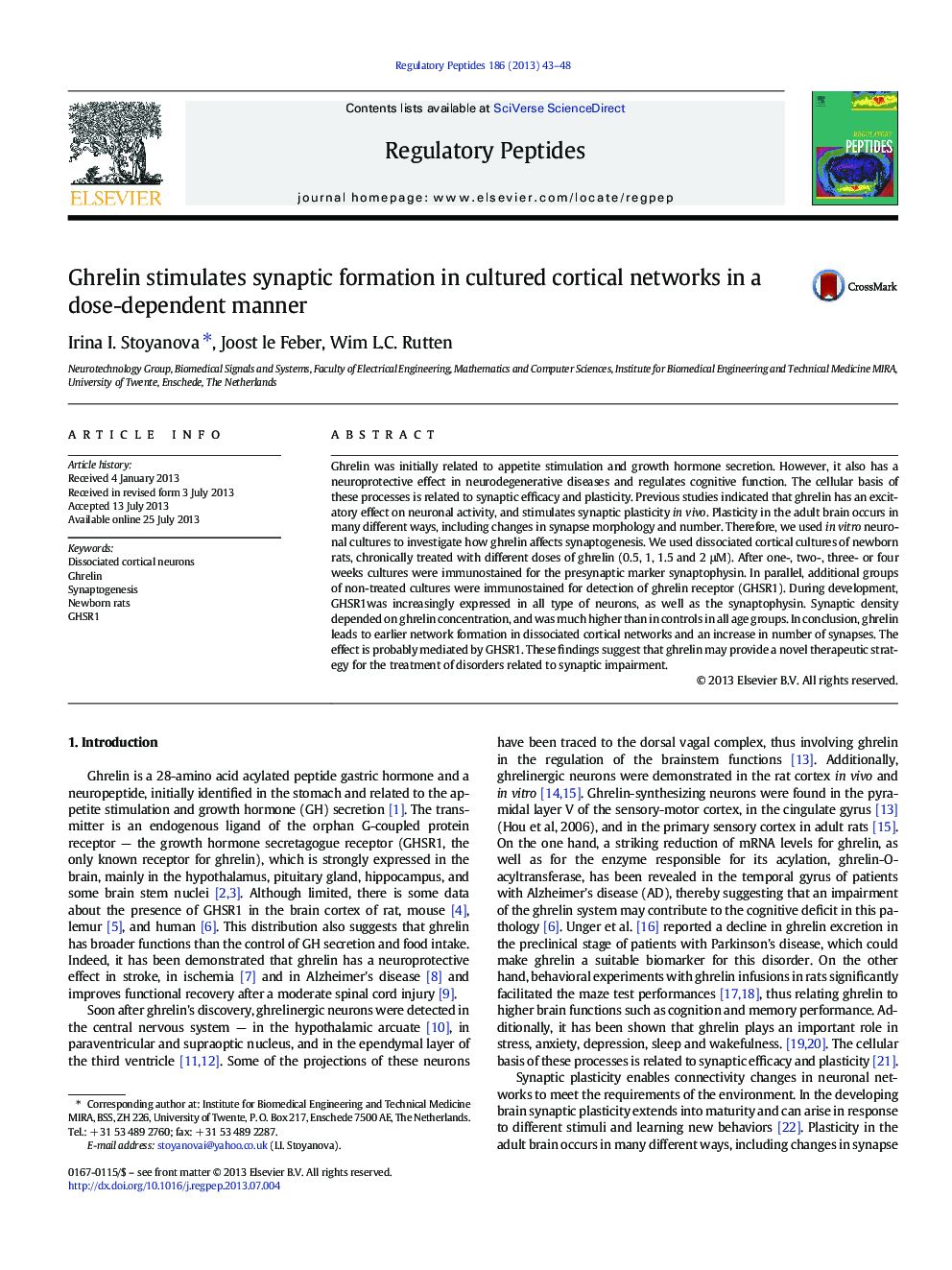| Article ID | Journal | Published Year | Pages | File Type |
|---|---|---|---|---|
| 8360986 | Regulatory Peptides | 2013 | 6 Pages |
Abstract
Ghrelin was initially related to appetite stimulation and growth hormone secretion. However, it also has a neuroprotective effect in neurodegenerative diseases and regulates cognitive function. The cellular basis of these processes is related to synaptic efficacy and plasticity. Previous studies indicated that ghrelin has an excitatory effect on neuronal activity, and stimulates synaptic plasticity in vivo. Plasticity in the adult brain occurs in many different ways, including changes in synapse morphology and number. Therefore, we used in vitro neuronal cultures to investigate how ghrelin affects synaptogenesis. We used dissociated cortical cultures of newborn rats, chronically treated with different doses of ghrelin (0.5, 1, 1.5 and 2 μM). After one-, two-, three- or four weeks cultures were immunostained for the presynaptic marker synaptophysin. In parallel, additional groups of non-treated cultures were immunostained for detection of ghrelin receptor (GHSR1). During development, GHSR1was increasingly expressed in all type of neurons, as well as the synaptophysin. Synaptic density depended on ghrelin concentration, and was much higher than in controls in all age groups. In conclusion, ghrelin leads to earlier network formation in dissociated cortical networks and an increase in number of synapses. The effect is probably mediated by GHSR1. These findings suggest that ghrelin may provide a novel therapeutic strategy for the treatment of disorders related to synaptic impairment.
Keywords
Related Topics
Life Sciences
Biochemistry, Genetics and Molecular Biology
Biochemistry
Authors
Irina I. Stoyanova, Joost le Feber, Wim L.C. Rutten,
